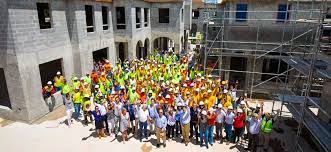Introduction
When it comes to coastal construction, striking a balance between creating structures that withstand natural forces and preserving the delicate marine ecosystem is of paramount importance. Coastal areas are particularly vulnerable to the impacts of climate change, rising sea levels, and extreme weather events. In this article, we will explore the challenges and opportunities in coastal construction and discuss sustainable practices that ensure resilience while protecting the environment.
Understanding the Coastal Environment
1. The Coastal Zone
The coastal zone refers to the region where land and sea meet. It encompasses beaches, dunes, marshes, estuaries, and mangroves, among other critical ecosystems. Understanding the complex dynamics of this area is essential for effective coastal construction.
2. Coastal Hazards
Coastal areas are susceptible to various hazards, such as hurricanes, storm surges, coastal erosion, and flooding. These hazards can cause extensive damage to infrastructure, properties, and natural habitats.
3. Impact of Climate Change
With climate change accelerating, sea levels are rising, and extreme weather events are becoming more frequent and intense. These changes pose significant challenges to coastal construction projects.
Sustainable Coastal Construction Techniques
4. Coastal Engineering
Coastal engineers play a crucial role in designing structures that can withstand the forces of nature. They utilize advanced materials and innovative designs to create resilient infrastructure.
5. Green Infrastructure
Incorporating green infrastructure, such as living shorelines and artificial reefs, can provide natural buffers against erosion and storm surges while enhancing biodiversity.
6. Building Setbacks
Adopting building setbacks ensures that structures are located away from vulnerable areas, reducing the risk of damage from coastal hazards.
7. Elevation and Foundation
Raising the elevation of buildings and using appropriate foundation designs can mitigate the impacts of flooding and storm surges.
8. Sustainable Materials
Using eco-friendly and durable materials in construction reduces the environmental footprint while enhancing the longevity of coastal structures.
The Importance of Stakeholder Collaboration
9. Government Regulations
Stringent regulations and building codes must be enforced to ensure that coastal construction adheres to sustainability and resilience standards.
10. Involving Local Communities
Engaging with local communities in the planning and decision-making process fosters a sense of ownership and encourages sustainable practices.
Balancing Human Needs and Environmental Preservation
11. Tourism and Coastal Development
Tourism is often a significant driver of coastal development. It is crucial to strike a balance between economic growth and environmental conservation.
12. Habitat Restoration
Restoring and protecting coastal habitats, such as wetlands and mangroves, contributes to the overall health of the ecosystem.
Conclusion
Coastal construction presents unique challenges that demand innovative solutions and a commitment to sustainability. By integrating cutting-edge engineering techniques, green infrastructure, and community involvement, we can build resilient coastal structures that safeguard both human interests and the environment.





Leave a reply